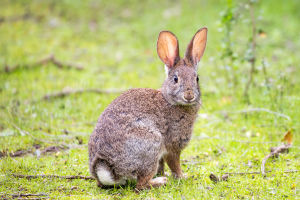Have we ever seen a tiny bird move so fast that it seems to shimmer in the sunlight? With wings that beat almost invisibly and colors that glow like gemstones, hummingbirds are true wonders of nature.
Native to the Americas, these miniature marvels belong to the “Trochilidae” family, with about 375 species found from Alaska to the southern tip of South America.
Despite their delicate size, they break records in the bird world for speed, agility, and endurance, proving that even the smallest creatures can hold incredible power.
Tiny Bodies, Giant Energy
When we think of small birds, we might imagine fragility—but hummingbirds defy that. They are the smallest warm-blooded animals on Earth, measuring between 3 and 5 inches (7.5–13 cm) long. The Bee Hummingbird from Cuba is the tiniest of all, only about 2 inches (5 cm) and weighing less than 2 grams (0.07 oz). On the other end, the Giant Hummingbird reaches 9 inches (23 cm) and weighs up to 24 grams (0.85 oz).
To sustain their rapid movements, hummingbirds have one of the highest metabolic rates of any animal. Their hearts can beat more than 1,200 times per minute! To save energy at night or during food shortages, they enter a torpor state—a kind of mini-hibernation—where their metabolism slows to just 1/15 of normal. This ability allows them to survive in harsh environments and high altitudes.
Masters of the Sky
We can instantly recognize hummingbirds by the unique way they fly. Thanks to their specialized wing structure, they can hover in place like tiny helicopters, fly sideways, and even go backward. Their wings beat incredibly fast—ranging from 12 times per second in larger species to an astonishing 99 times per second in the smallest ones. This constant motion creates the soft “humming” sound that gives them their name.
During courtship, male hummingbirds perform breathtaking dives, reaching speeds of up to 51 mph (83 km/h). They rise high into the air, then swoop down toward the females in dramatic, shimmering displays. The vibrant colors of their feathers—iridescent blues, greens, and purples—reflect light in such a way that every movement sparkles differently, adding to their mesmerizing beauty.
Life Fueled by Sweet Nectar
Hummingbirds are best known for their love of flower nectar. Their long, slender beaks and specialized tongues let them reach deep into blossoms to sip the sugary liquid. But nectar alone isn’t enough. To maintain their energy, they also eat small insects and spiders, gaining essential proteins and minerals.
Interestingly, their feeding also helps flowers reproduce. As we watch them dart from bloom to bloom, they act as pollinators, carrying pollen on their heads and beaks—making them tiny but vital players in many ecosystems. In tropical regions, hummingbirds visit thousands of flowers every day, forming beautiful partnerships with nature.
Brilliant Feathers and Courting Colors
If we’ve ever seen a hummingbird in sunlight, we know their feathers aren’t just colorful—they glow. Males, especially, use these bright, metallic feathers to attract females and defend territories. Their throats often feature a “gorget,” a patch of iridescent feathers that changes color with the light and angle. Each movement is like a flicker of gemstone fire.
The names of some species even reflect their brilliance: sun gem, fairy, sapphire, and woodstar. Watching them feels like looking at living jewelry, each fluttering in a dance of light.
From Mountains to Migration
Though most hummingbirds stay within their regions, some species, such as the Rufous Hummingbird, are among the world’s longest-distance migrants. Every year, they travel nearly 3,900 miles (6,300 km) between Alaska and Mexico—an incredible journey for such a tiny creature. Their ability to survive at high altitudes, from the Andes to North America’s forests, shows how adaptable they are.
Fossils tell us that hummingbirds have been around for over 42 million years. Their closest relatives are swifts, and over time, they evolved their incredible hovering ability and colorful plumage, turning into the tiny aerial wonders we admire today.
A Spark of Nature’s Wonder
Lykkers, hummingbirds show us that true brilliance often comes in the smallest forms. With their glowing feathers and graceful flight, they embody the beauty and power of nature’s design. Watching one hover near a flower feels like witnessing a moment of magic—where light, color, and life come together in perfect harmony.
So next time we see a hummingbird darting through the air, let’s take a breath and appreciate this tiny spark of wonder. These little travelers remind us that even the smallest wings can carry the brightest dreams.
Only bird that can fly forward, backward, upside-down and hover | Hummingbird
Video by Nature Notes


